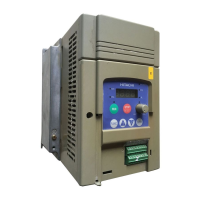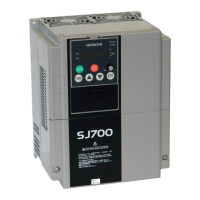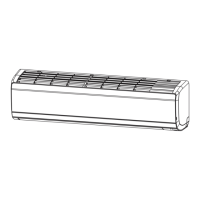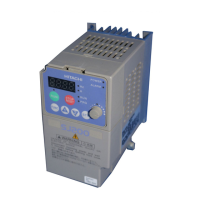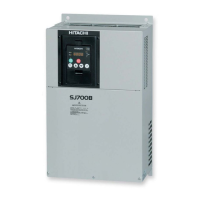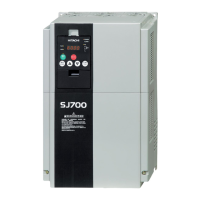




Do you have a question about the Hitachi SJ100 Series and is the answer not in the manual?
General electrical and environmental specifications applicable to all SJ100 inverters.
Detailed steps for inverter installation, including mounting location.
Safety warnings and precautions before proceeding with wiring.
Table for selecting appropriate wire sizes and fuse capacities.
Instructions for connecting the inverter to a power supply.
Steps for connecting the motor to the inverter output terminals.
Performing a powerup test and interpreting observations.
Introduction to the keypad layout and parameter editing controls.
Detailed explanation of the inverter's front panel keypad and its functions.
Configuring and using the inverter's programmable input terminals.
Configuring and using the inverter's programmable output terminals.
Running the auto-tuning procedure for optimal sensorless vector control.
Configuring and utilizing the built-in PID loop for process control.
Safety messages and general precautions for troubleshooting.
Understanding how to monitor fault events and error codes.
A table listing error codes, names, and their causes.
Procedure to reset all inverter parameters to factory default values.
Monthly and yearly inspection chart for the inverter.
General electrical and environmental specifications applicable to all SJ100 inverters.
Detailed steps for inverter installation, including mounting location.
Safety warnings and precautions before proceeding with wiring.
Table for selecting appropriate wire sizes and fuse capacities.
Instructions for connecting the inverter to a power supply.
Steps for connecting the motor to the inverter output terminals.
Performing a powerup test and interpreting observations.
Introduction to the keypad layout and parameter editing controls.
Detailed explanation of the inverter's front panel keypad and its functions.
Configuring and using the inverter's programmable input terminals.
Configuring and using the inverter's programmable output terminals.
Running the auto-tuning procedure for optimal sensorless vector control.
Configuring and utilizing the built-in PID loop for process control.
Safety messages and general precautions for troubleshooting.
Understanding how to monitor fault events and error codes.
A table listing error codes, names, and their causes.
Procedure to reset all inverter parameters to factory default values.
Monthly and yearly inspection chart for the inverter.
| Control Method | V/f control, Sensorless vector control |
|---|---|
| Overload Capacity | 150% for 60 seconds |
| Protection Features | Overcurrent, Overvoltage, Undervoltage, Overheat, Short Circuit |
| Built-in Functions | PID Control, Torque Control |
| Communication Options | RS-485 (Modbus RTU) |
| Cooling Method | Forced Air Cooling |
| Operating Temperature | -10°C to +50°C |
| Humidity | 5-95% (non-condensing) |
| Altitude | Up to 1000m above sea level (Derating required above 1000m) |
